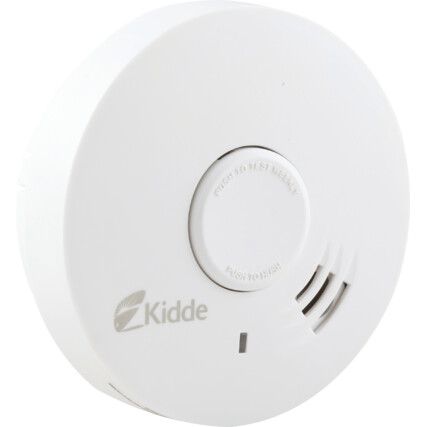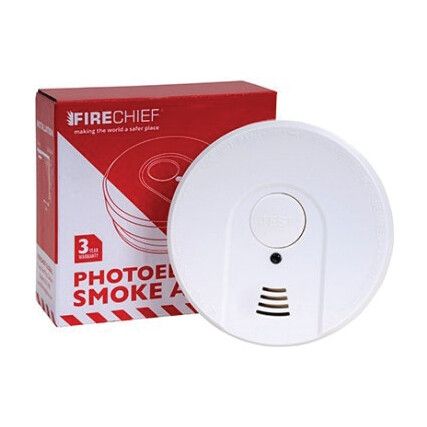Smoke Alarms
A vital part of a comprehensive workplace fire safety set up, smoke and carbon monoxide alarms are a simple yet highly effective way of detecting dangerous levels of smoke or carbon monoxide in a premises.
Here at Cromwell, we supply a choice range of smoke alarms from market leader Kidde.
What are smoke alarms?
moke and carbon monoxide alarms are safety devices designed to detect the presence of smoke and carbon monoxide gas in residential, commercial, or industrial settings.
When to use smoke alarms?
They are essential components of any comprehensive home safety system, as both smoke and carbon monoxide are hazardous to human health and can lead to life-threatening situations.
Why use smoke alarms?
These alarms are crucial for providing early warning to occupants, allowing them to evacuate in the event of a fire or carbon monoxide leak.
Smoke alarm types
There are different types of combined smoke and carbon monoxide alarms available, each utilising various technologies for detection. We've outlined the most common types below.
• Ionisation and electrochemical alarms - These types of alarms use ionisation technology to detect smoke and electrochemical sensors to detect carbon monoxide. They are effective in providing comprehensive detection for both fire-related and carbon monoxide-related threats.
• Photoelectric and biomimetic alarms - These alarms utilise photoelectric technology for smoke detection and biomimetic sensors for carbon monoxide detection. They are effective in detecting slow, smoldering fires and low levels of carbon monoxide gas.
Considerations when choosing a smoke alarm
When choosing smoke alarms, several factors should be considered to ensure their effectiveness and suitability for your specific needs.
• Type of sensor technology - Consider the type of threats most likely to occur in your environment and choose an alarm that utilises the appropriate sensor technology for both smoke and carbon monoxide detection. Ensure the alarm is equipped to detect both fast-flaming and slow-smoldering fires, as well as varying levels of carbon monoxide gas.
• Power source - Smoke and carbon monoxide alarms can be powered by batteries, electricity, or a combination of both. Consider the reliability of the power source and the frequency of battery replacements or maintenance required for hard-wired systems.
• Interconnectivity - Opt for alarms that can be interconnected, so when one alarm is triggered, all interconnected alarms will sound. This feature is crucial for providing comprehensive coverage and ensuring that occupants are alerted throughout the entire building.
• Installation and maintenance - Choose alarms that are easy to install and maintain. Consider the placement requirements and installation process to ensure proper positioning for optimal performance. Regular maintenance, such as testing and cleaning, should also be considered.
• Compliance with regulations - Ensure that the alarms comply with relevant safety regulations and standards in your region. Verify that the alarms meet the necessary certifications and testing requirements for reliability and effectiveness.
By considering these factors, you can select a suitable smoke and carbon monoxide alarm that provides early detection and reliable warning in the event of a fire or carbon monoxide leak, helping to safeguard the occupants and property in your home, workplace, or any other relevant environment.

